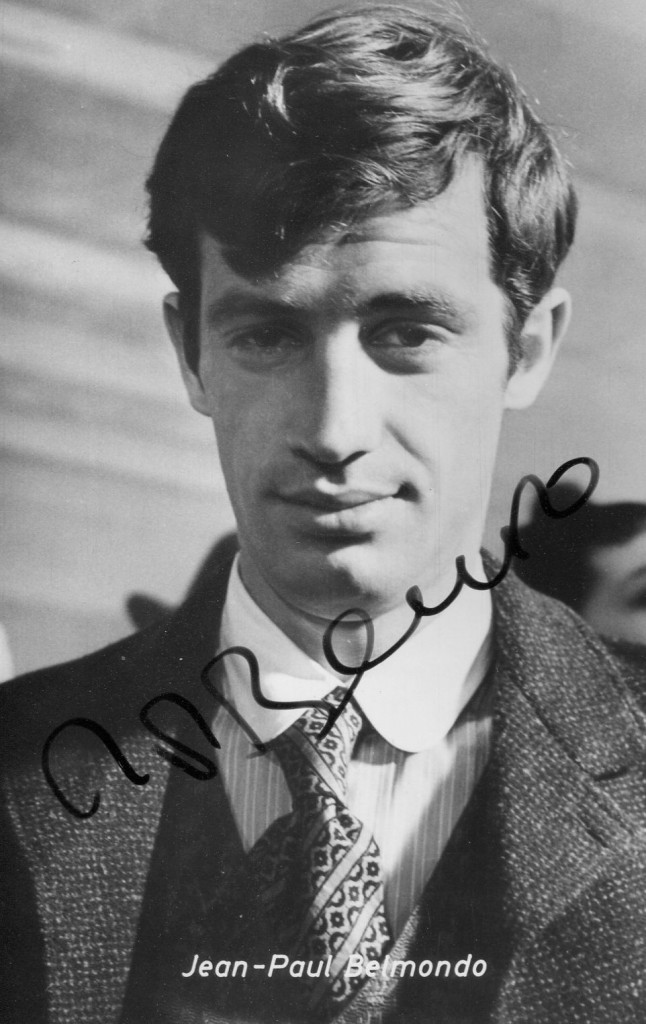
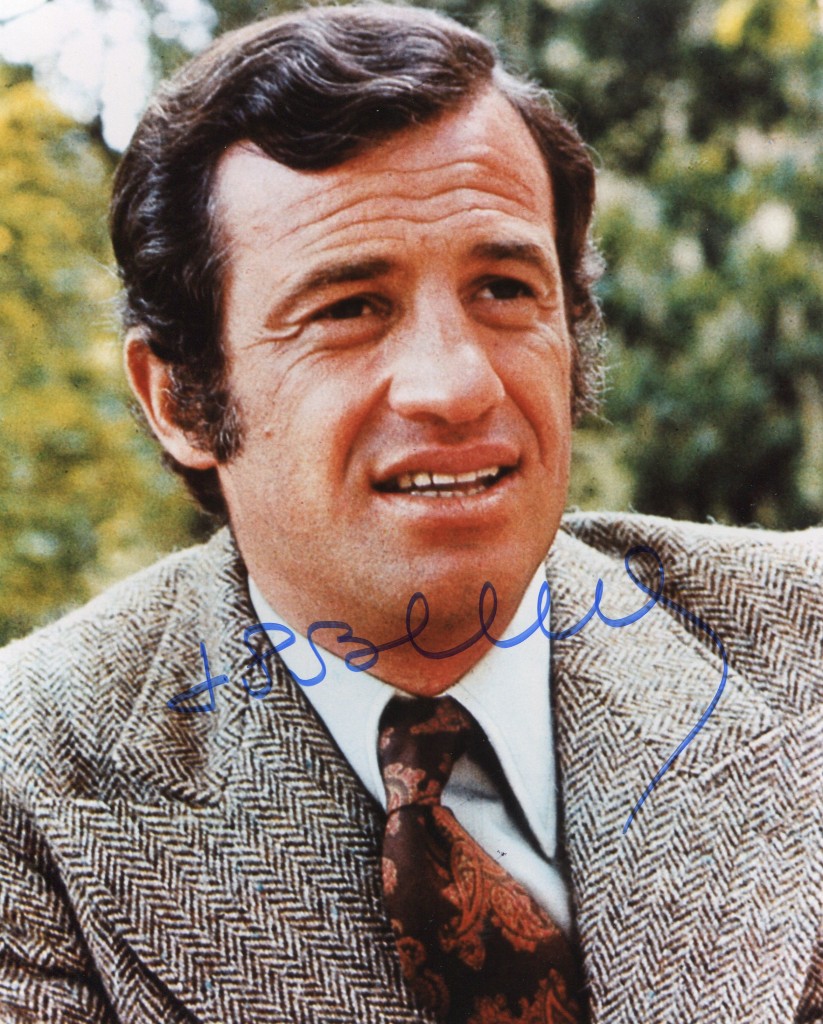
Jean-Paul Belmondo. TCM Overview
‘New blood, new looks, new vitality, new fluidum, new eroticism, new normality for that malady-ridden strain of to-day’s neurotic actors’ – Marlene Dietrich’s ‘ABC’ under B for Belmondo. – David Shipman in “The Great Movie Stars – The International Years”. (1972)
Jean-Paul Belmondo was born near Paris in 1933. In his youth he was a boxer and a footballer. In 1960 he had a huge success in French cinema with his performance in “Breathless” with Jean Seberg. He went on to make “Leon Morin, Priest” and “That Man From Rio”. In 1970 he starred with Alain Delon in “Borsalino”. He has acted also on the stage.
TCM Overview:
For generations of French filmgoers and lovers of international cinema, few actors defined the Gallic male on screen more succinctly than Jean-Paul Belmondo. Though rugged and unconventionally handsome, Belmondo’s innate charm and physicality captured the world’s attention with his turn as a doomed small-time crook in Jean-Luc Godard’s “Breathless” (1960), one of the vanguards of the French New Wave. The film’s global popularity minted him as an icon of cinematic cool, an image he would underscore for the next four decades in arthouse-minded projects like Godard’s “Pierrot le Fou” (1965) and Francois Truffaut’s “Mississippi Mermaid” (1969). At the same time, he proved himself as a capable and highly athletic action star, often providing his own daring stunts in “That Man from Rio” (1964), “Borsalino” (1970) and “The Professional” (1981). He returned to stage work and more sedate fare in the late 1980s and ’90s, earning a Cesar for “Itinéraire d’un enfant gâté” (1988) and high praise for a modern-day take on “Les Misérables” (1995) before suffering a paralyzing stroke. Though physically limited, he returned to features in 2008 for the melancholy “A Man and His Dog” (2008). Though no longer the robust, roguish figure of his youth, Belmondo’s inherent strength and spirit remained intact, providing an inspiring reminder of why he remained a French national treasure for nearly half a century.
Born April 9, 1933 in the Parisian suburb of Neuilly-sur-Seine, Jean-Paul Belmondo was the son of sculptor Paul Belmondo. A poor student, he channeled his energies into boxing and football, but by his twenties, decided that acting would be his true calling. He was reluctantly accepted at the Paris Conservatory, whose educators felt that his prospects as a professional actor were slim. Belmondo would spend much of the 1950s in theater before making his screen debut in the 1957 comedy “A pied, a cheval et en voiture” (“On Foot, On Horse and By Carriage”). He eventually worked his way up to starring roles with “Sois Belle et Tais-Toi” (“Be Beautiful But Shut Up”) (1957), a crime picture co-starring another up-and-coming leading man, Alain Delon. Belmondo’s breakthrough coincided with the rise of the French New Wave cinema. His young, reckless but romantic thief in Jean-Luc Godard’s “A bout de soufflé” (“Breathless”) (1960) epitomized the movement’s rejection of old standards of storytelling and characterization. The film’s popularity among young moviegoers on both sides of the Atlantic helped to make Belmondo an international star with the same cultural impact as James Dean or Marlon Brando, with young men adopting his casual slouch and rough-hewn charm.
Belmondo soon became the actor of choice for other New Wave directors, playing daring, forward-thinking young men who challenged the establishment in Vittorio De Sica’s “Two Women” (1960) and Jean-Pierre Melville’s “Léon Morin, Priest” (1961), which earned him a BAFTA nomination as a young priest who inspired both faith and emotion in Emmanuelle Riva’s disillusioned war widow. He would also reunite twice with Godard, first for the musical comedy tribute “A Woman is a Woman” (1961) and later, as the lead in his postmodern, genre-bending “Pierrot le Fou” (1965). At the same time, Belmondo was finding great success as the athletic hero of mainstream features like the period swashbuckler “Cartouche” (1962) with Claudia Cardinale and Philippe De Broca’s action-thriller “That Man from Rio” (1964). These films, along with the comedy-romance “La chasse à l’homme” (“Male Hunt”) (1964) with sisters Catherine Deneueve and Francoise Dorleac, soon replaced arthouse fare as Belmondo’s projects of choice. Belmondo also served as president of the French actors’ union in 1963, the same year he published his autobiography, 30 Years and 25 Films.
Belmondo soon settled into a string of energetic action features like “Les tribulations d’un Chinois en Chine” (“Up to His Ears”) (1965), many of which were produced through his own company, Cerito. There were occasional forays into English-language filmmaking, like “Is Paris Burning?” (1966), in which he and other young lions of French cinema like Delon and Jean-Pierre Cassel played leaders of the French Resistance, and a cameo in the overblown “Casino Royale” (1967). But Belmondo remained resolutely faithful to French cinema, and continued to divide his time between popular entertainment like the caper film “The Brain” (1968) and “Borsalino” (1971) with Delon, and collaborations with New Wave mainstays like Louis Malle with “The Thief of Paris” (1967), Francois Truffaut with “Mississippi Mermaid” (1969) and Claude Chabrol with “Docteur Popaul” (“High Heels”) (1972).
Alain Resnais’ “Stavisky” (1974) earned Belmondo some of the best reviews of his career as the real-life embezzler whose elaborate surety scheme unseated Prime Minister Camille Chautemps in the 1930s. But its failure at the box office seemed to sour the actor on arthouse projects, so he devoted himself to action and crime thrillers for much of the next two decades. He began a profitable collaboration with director Georges Lautner as the anti-hero of such action-packed films as “Flic ou Voyou” (“Cop or Hood”) (1979) and “The Professional” (1981), which frequently featured Belmondo performing his own stunts. In the late ’80s, with his status as an action star on the wane due to age, Belmondo returned to the stage, and soon divided his time between popular tours in Cyrano de Bergerac, among other productions, and more arthouse-minded film projects. In 1988, he won the Cesar as a wealthy man who staged his own death in Claude Lelouch’s “Itinéraire d’un enfant gâté” (1988).
Belmondo continued to work well into the 1990s, most notably in Lelouch’s “Les Misérables” (1995) as the film’s modern-day Jean Valjean figure. He spent much the decade reaping national rewards for his body of work, including appointment as Officer of the Legion of Honor in 1991 and Commander of the National Order of Merit in 1994. In 2001, he suffered a debilitating stroke that left him partially paralyzed. Belmondo spent the next seven years recuperating, but returned in 2008 for “A Man and His Dog” (2008), a semi-remake of De Sica’s “Umberto D.” (1952) with Belmondo as an aging, debilitated pensioner who was cast out by his landlady lover after she decided to marry another man. The film generated controversy in the European press, with critics alternately praising Belmondo’s courageous performance or condemning the film for showing a national icon in such an unkind light.
By Paul Gaita
This TCM overview can also be accessed online here.
Jean-Paul Belmondo died aged 88 in September 2021.
Guardian obituary in September 2021.
Jean-Paul Belmondo, who has died aged 88, was the actor who more than any other epitomised the French Nouvelle Vague. In Breathless (1960), one of the most influential films of the last six decades, the 26-year-old Belmondo played Michel Poiccard, who steals a car in Marseille, kills the policeman who follows him and hides out in Paris with his American girlfriend (Jean Seberg).
What struck one immediately were the thick, sprawling lips – on to which was stuck a Gauloise – the broken nose, and the sunglasses, suit, tie and hat worn as a homage to the great US gangster prototypes, especially Humphrey Bogart. At one stage, Poiccard looks at a film poster, runs his fingers over his lips and sighs: “Bogie.”
Despite the tough exterior, Belmondo gave the impression of fragility, with his pale, delicate skin and soft voice. The New York Times reviewer found him “hypnotically ugly” and “the most effective cigarette-mouther and thumb-to-lips rubber since time began”.
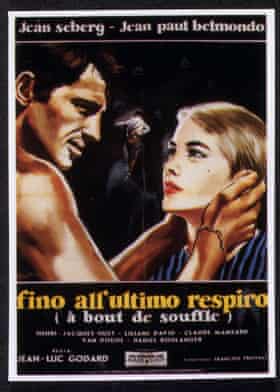
Because of Belmondo’s relaxed, naturalistic acting technique, it was assumed that the dialogue had been improvised, but it was written by the film’s director, Jean-Luc Godard, who nevertheless would not allow the actor to learn his lines but cued him during takes. In the final sequence, the camera chases Belmondo as he continues to run after being shot. As he dies, he looks up at his girlfriend, smiles knowingly and says: “C’est dégueulasse!” (“It’s shitty!”).
Because Belmondo projected an anti-conformist image, he was immediately dubbed “le James Dean français”, and after Paul Newman saw him in Paris in the early 1960s he commented: “Why, he’s one of us.” When Jean Gabin, from the golden age of prewar French cinema, co-starred with Belmondo, the darling of the New Wave, in Un Singe en Hiver (A Monkey in Winter) in 1962, he told him: “Kid, you’re me at 20.”Advertisementhttps://41fff71a0ef42e5734925b483b8ce969.safeframe.googlesyndication.com/safeframe/1-0-38/html/container.html
There was even a wave of “Belmondism”, manifesting itself in a particular style of offhand, narcissistic behaviour. Of his joli-laidlooks, Belmondo commented, “Hell, everybody knows that an ugly guy with a good line gets the chicks.” At the age of 19, he had married a dancer, Élodie Constantin. In 1966 while starring in Philippe De Broca’sUp to His Ears, he and Ursula Andress fell for each other, and Élodie, the mother of their three children, filed for divorce.
In a way, it is absurd that, following Breathless, Belmondo soon chose to withdraw more and more from the New Wave directors and go into commercial films with few artistic demands – vehicle thrillers, adventure movies and acrobatic comedies, in which he became repetitious and self-parodic. The actor Claude Brasseur remarked: “Despite everything, I think it’s a pity for him making popular films because he could enjoy his métier so much more. I remember at the Conservatoire he did astonishing things. Alas, now he has become a sort of stunt man de luxe.”

Advertisement
What was most dispiriting about his career was that French audiences seemed to prefer it that way. When reproached, Belmondo replied: “My public expects a certain type of picture, and I’m not going to let them down.” Secure in his pre-eminence, producing many of his films himself, “Bebel”, as he was affectionately known in France, all but guaranteed a hit a year, few of which crossed the Channel or the Atlantic. Belmondo, who did not speak English, never made it to Hollywood, preferring to make American-type gangster movies such as Borsalino (1970), opposite Alain Delon, who shared top place in the box-office polls.
“Nothing impresses him. No danger, no risk, nothing serious, nothing important, nothing explained,” said the journeyman director Henri Verneuil, with whom Belmondo made eight pictures. “He never reads a scenario ahead of time. Never thinks out his role. Never says, ‘How was I in the last scene?’ Never makes suggestions.”
He was born in Paris, the grandson of an Italian workman from Piedmont who had emigrated to French Algeria. His father, Paul Belmondo, was a leading academic sculptor and a professor at the École Nationale Supérieure des Beaux Arts, and his mother, Sarah (nee Rainaud-Richard), was a painter. The rebellious Jean-Paul, whose schooldays were turbulent, studied drama at the Paris Conservatory following a brief career as an amateur boxer, and for several years performed in the classics on stage in the provinces before entering the Comédie-Française.
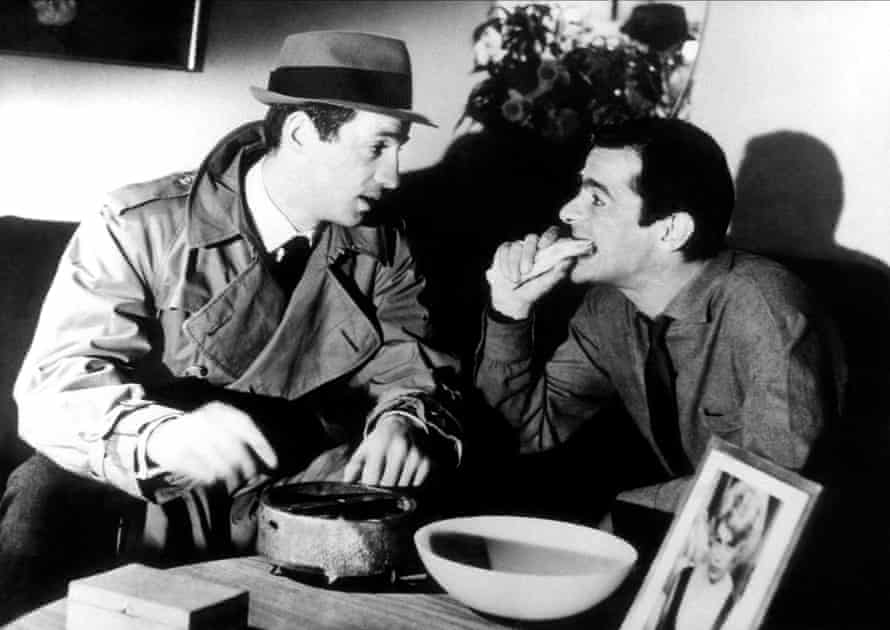
As Breathless was Godard’s first feature, it was assumed, by some critics, that it was also Belmondo’s. In fact, Belmondo appeared in supporting roles in nine films before his “overnight” rise to fame. One of his first roles was for Marcel Carné in Les Tricheurs (The Cheaters, 1958), and the following year his portrayal of Bernadette Lafont’s uncouth Hungarian fiance in Claude Chabrol’s À Double Tour (Web of Passion) prefigured the Breathless character.Advertisement
So strong was the impact of his persona in Breathless that his restrained performances as affectionate and humane characters in Vittorio De Sica’sTwo Women (1960), Peter Brook’s Moderato Cantabile (1960) and Jean-Pierre Melville’s Léon Morin, Priest (1961) came as a surprise, revealing an actor of a wider range than his subsequent filmography acknowledges. “He is the most accomplished actor of his generation,” claimed Melville. “He can play any given scene in 20 different ways, and all of them will be right.”
Belmondo made two further films for Melville, both in 1963: Le Doulos (The Finger Man) and L’Aîné des Ferchaux (Magnet of Doom). In the former, he suppressed his magnetic charm in the part of a sly, safecracking stool pigeon. But it was Godard who gave him his last great role, in Pierrot le Fou (1965). Belmondo as Ferdinand, dissatisfied with Parisian life, and with his wife, sets off on a picaresque journey to the south with Marianne (Anna Karina), getting involved with her criminal activities on the way.
There was a similarity between Ferdinand and Michel Poiccard – both are on the run, both are unable to assimilate into society, and each is betrayed by the woman he loves. However, Ferdinand is a more romantic and intellectual figure, acting out an existential tragedy of the transience of love. At the end, having fatally shot Karina and her boyfriend, Belmondo paints his face blue, places sticks of dynamite around his head and lights the fuse. He has second thoughts, but it is too late. “Damn, it’s too absurd!” he says before being blown up.
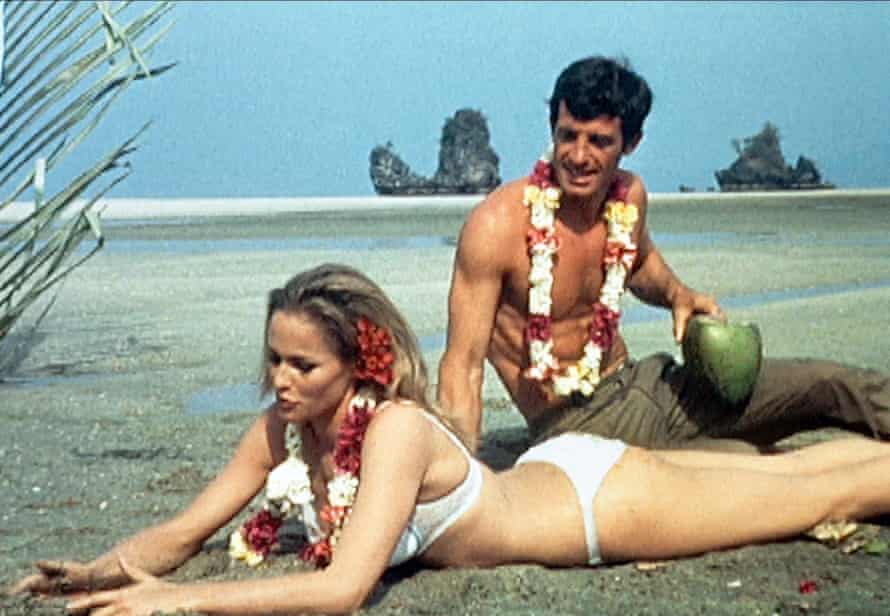
With challenging opportunities becoming rarer and rarer after Breathless, his acceptance of roles in François Truffaut’s Mississippi Mermaid (1969) and Alain Resnais’s Stavisky (1974) reminded audiences of his qualities. In the latter, Resnais cleverly subverted Belmondo’s charm and virility, the source of his success as a popular star, to play the notorious real-life conman.Advertisement
In 1987 he returned to the stage to play the title role in Kean, the Dumas drama reinvented by Jean-Paul Sartre, and was an excellent Cyrano de Bergerac three years later, also appearing in Feydeau’s A Flea in Her Ear for his own theatre company at the Théâtre Marigny in Paris. One of his last films to have received an international distribution was Les Misérables(1995), Claude Lelouch’s effective updating of the Victor Hugo classic to the Nazi occupation, with Belmondo in his most challenging screen role since the 60s as an uneducated ex-boxer who befriends an intellectual Jewish family.
In 2001, Belmondo suffered a stroke, which kept him off the stage and screen until his brief return in A Man and His Dog (2008), based on De Sica’s 1952 film Umberto D. Although he had difficulty walking and speaking, he played a character with the same disabilities. However, no matter what Belmondo did, most serious film commentators would continue to see him as the young rebel who rode in on the New Wave.
His second marriage, to the dancer Nathalie Tardivel, ended in divorce in 2008. Their daughter, Stella, survives him, along with a daughter, Florence, and son, Paul, from his first marriage. Another daughter from his first marriage, Patricia, died in a fire in 1994.
Jean-Paul Belmondo, actor, born 9 April 1933; died 6 September 2021

